Chapter 5. Arga slide activity sample 5
Arga slide activity sample 5
Introduction

Activity Objective:
This tutorial will help you understand when and why you need to acknowledge sources. Upon finishing this tutorial, you will be able to distinguish among:
- Common knowledge
- Facts
- Firsthand ideas and research
- Other people’s words
- Other people’s ideas, judgments, opinions, and arguments
Click the forward and backward arrows to navigate through the slides. You may also click the above outline button to skip to certain slides.
Do I Need to Cite Everything?
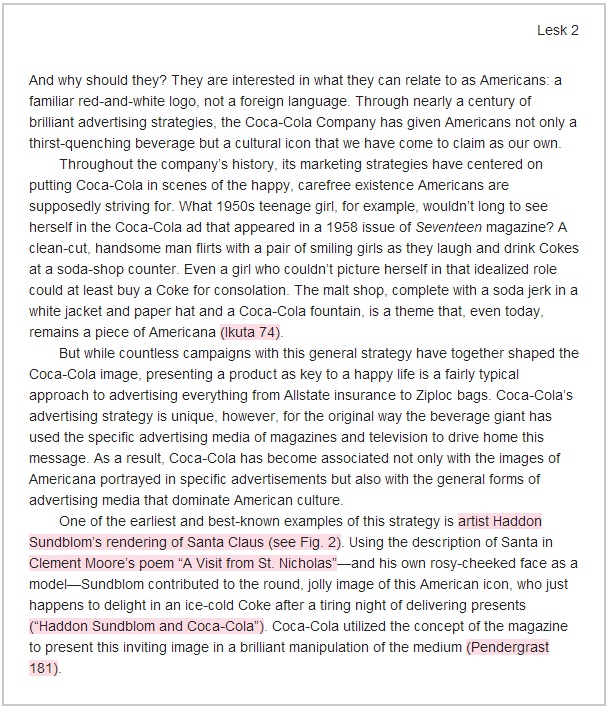
Beginning researchers often ask, “Do I have to cite everything?” This is a good question because not every piece of information in a research paper must be cited. Figuring out what to cite and what not to cite can sometimes be difficult, even for experienced researchers. Generally, if you are unsure, include a citation. It is always better to have an unnecessary citation in your paper than to omit one that is necessary.
Important: Your school’s policy on academic integrity and plagiarism might contain guidelines that differ from those in this tutorial. When in doubt, always follow the guidelines that are specific to your school.
Materials that Don’t Require Acknowledgment
The following types of sources do not require acknowledgment:
- Common knowledge
- Facts
- Your own ideas
- Your own field research
Common Knowledge

Common knowledge refers to information that is widely known or easily observable. Ask yourself:
“Is this something everyone knows?”
Thinking about What Counts as Common Knowledge
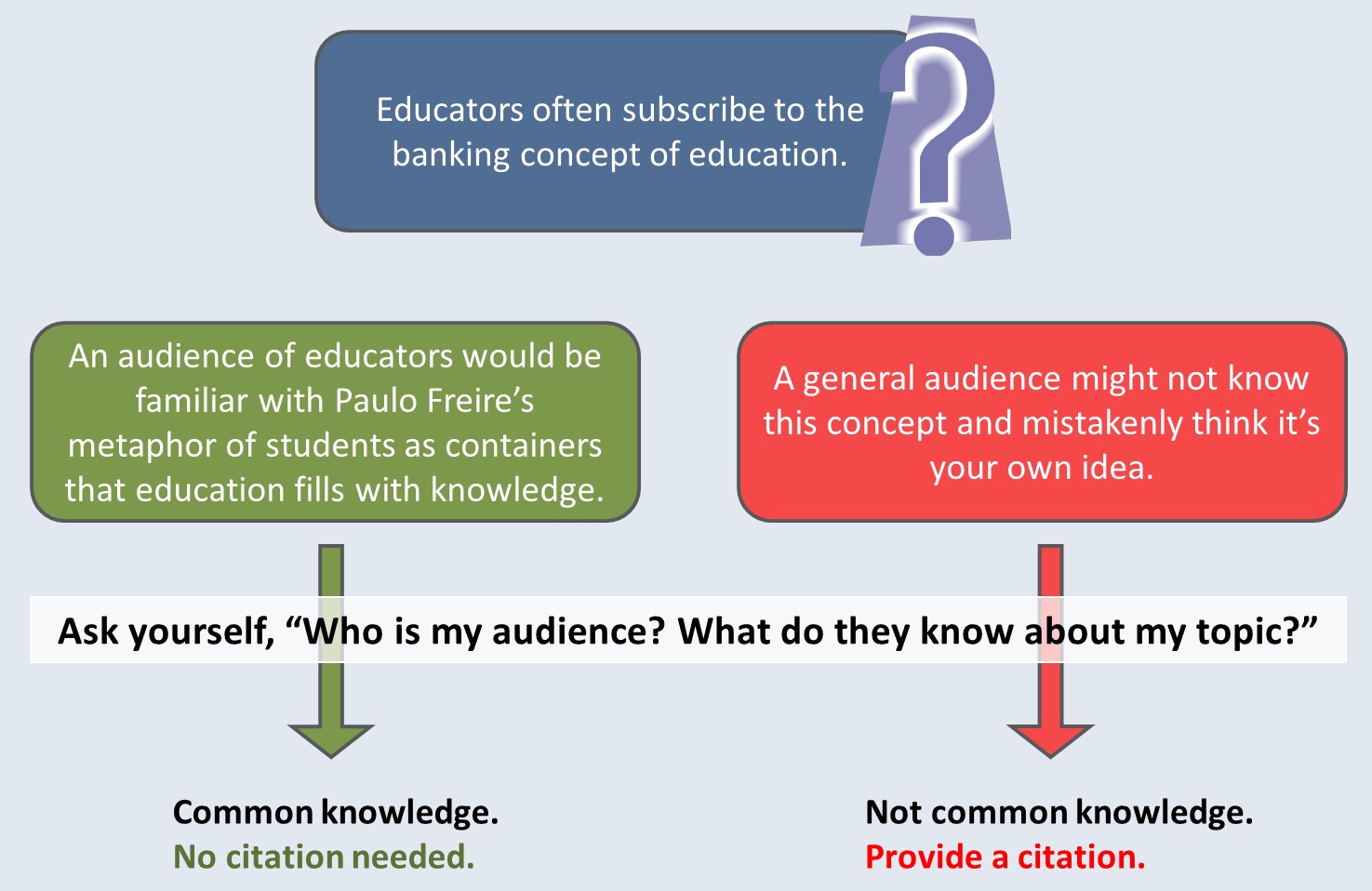
Recognizing Common Knowledge
For the following examples, use the dropdown to indicate whether or not these statements are common knowledge.
|
Are these statements common knowledge? |
|
|---|---|
| There are 365 days in a year. | |
| Diwali is a Hindu festival celebrated every fall. | |
| Fifty percent of Americans now support marriage equality. | |
Facts
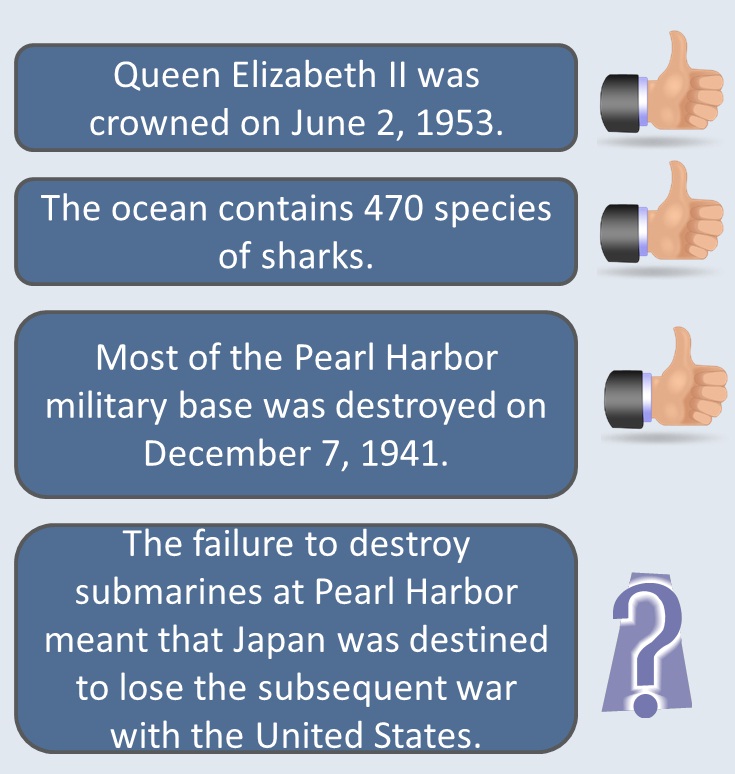
Facts are uncontested pieces of information that can be found in a number of sources, especially reference sources such as encyclopedias. Ask yourself:
“Is this a commonly accepted fact?”
Thinking about What Counts as a Fact
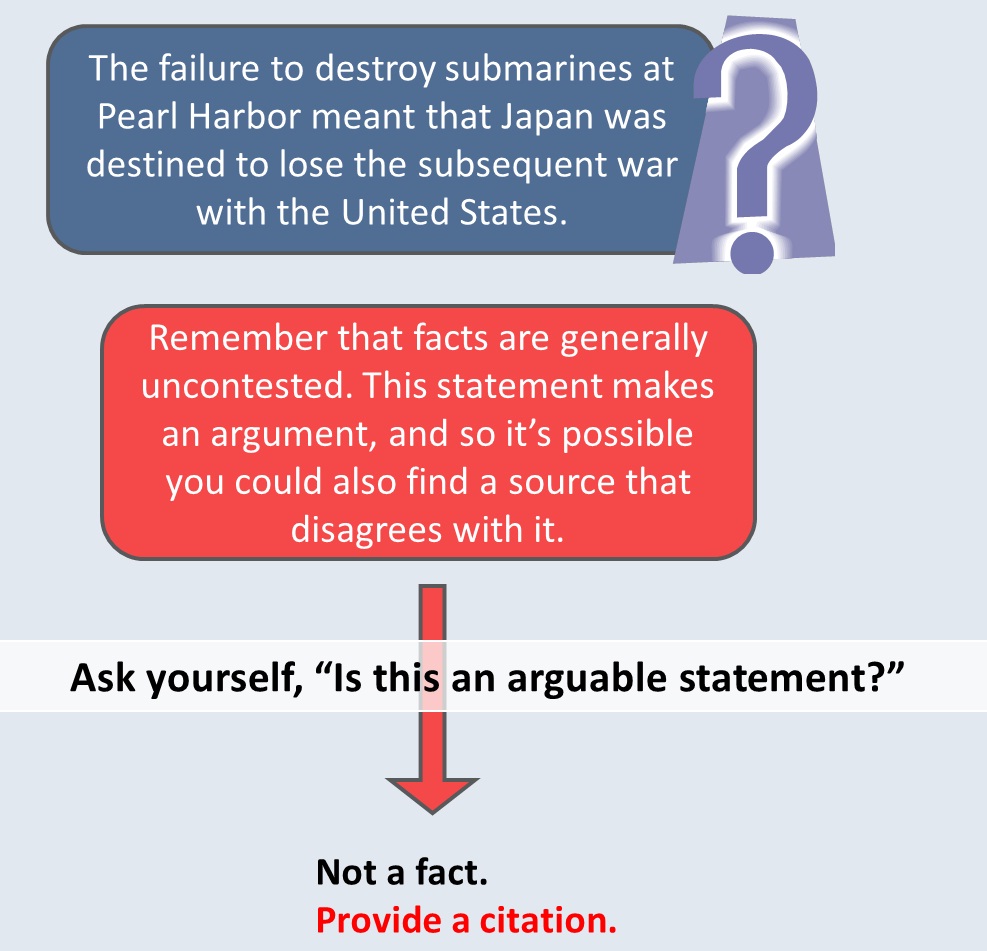
Recognizing Facts
For the following examples, use the dropdowns to indicate whether or not these statements are facts.
|
Are these statements facts? |
|
|---|---|
| The Treaty of Versailles was signed on June 28, 1919. | |
| There are too many guns in private homes in the United States. | |
| Humans, or the species Homo sapiens, are part of the class Mammalia. | |
Your Own Ideas
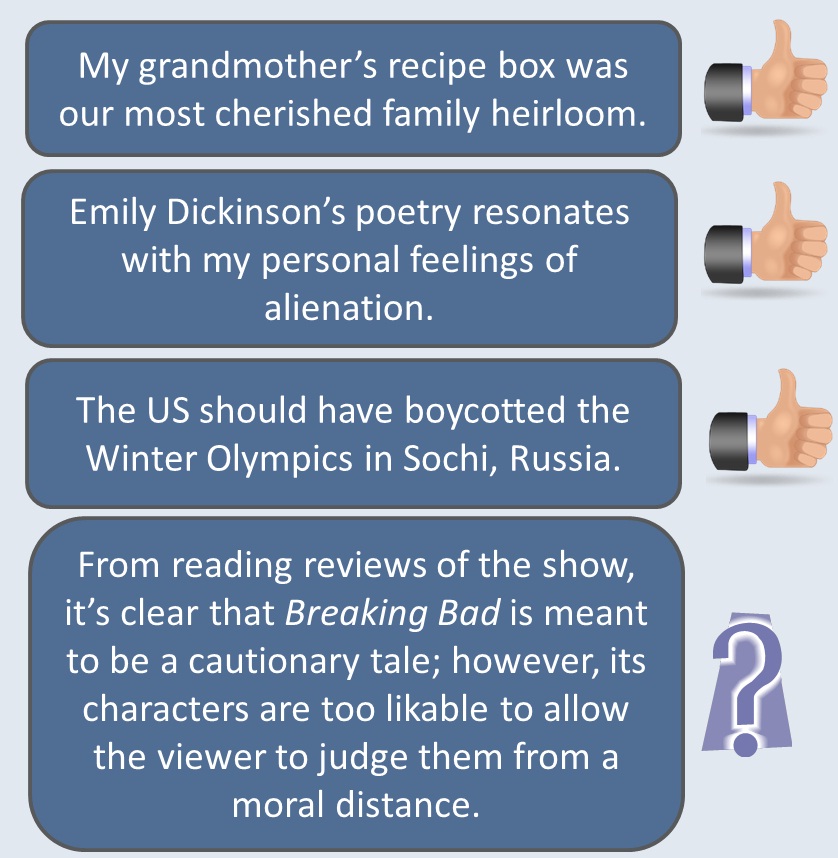
Your Own Ideas are present whenever you interpret information from your research or when you draw independent conclusions. Ask yourself:
“Is this an insight or argument I came up with on my own?”
Thinking about What Counts as Your Own Ideas
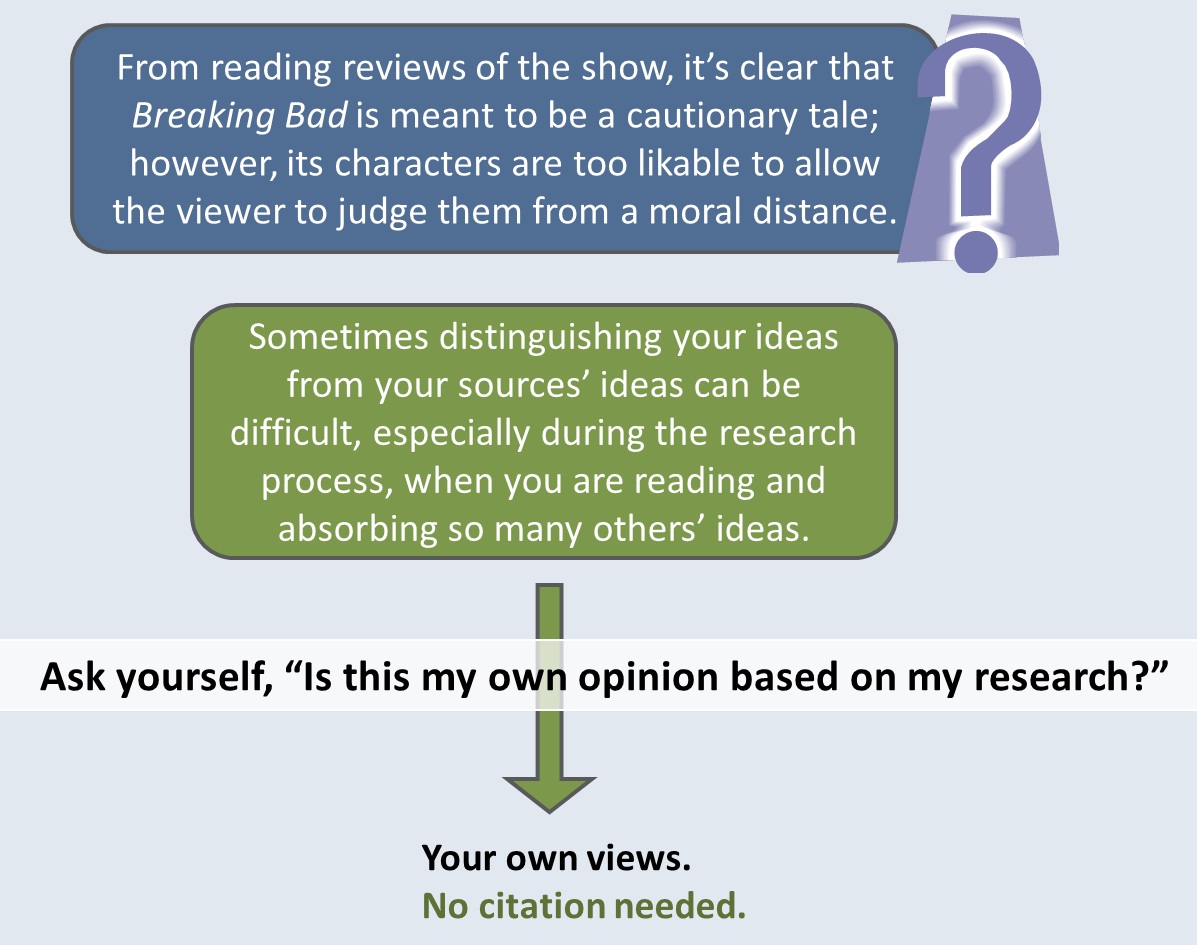
Your Own Field Research

Your own field research is knowledge that you create by conducting a field study such as a survey, interview, or observation. Ask yourself:
“Is this information I collected on my own?”
Thinking about What Counts as Your Own Field Research
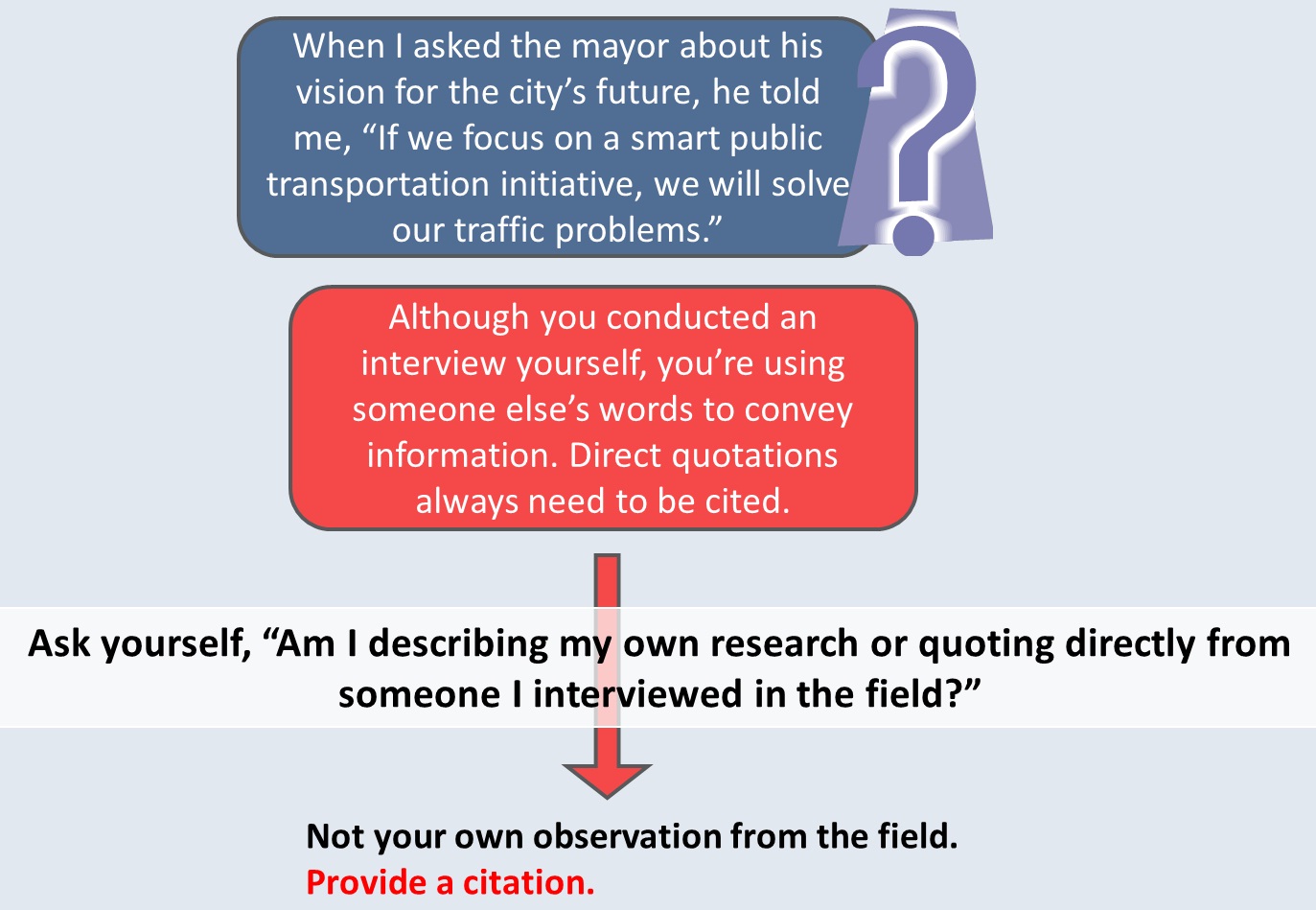
Materials that Require Acknowledgment
Commonly consulted sources for research projects include books, articles from journals or newspapers, and Web sites. Keep in mind that some of your sources may be somewhat unusual, such as blog comments, an interview you conduct yourself, or the instruction manual for a model ship kit. Everything that you draw from another source, unless it falls into one of the categories described earlier (common knowledge, fact, your own ideas, and your own field research), must be cited.
Your citations should appear in two places: first, in the body of your paper, and second, in a list at the end of the paper. The style of citation your teacher has asked you to use will affect the formatting of these citations.
Materials that Require Acknowledgment

For example, in Modern Language Association (MLA) style, your in-
Materials that Require Acknowledgment

Complete bibliographic information for each source will appear in a section titled “Works Cited.”
You can think of citations as a kind of map for your reader. An in-
Materials that Require Acknowledgment
The following types of sources do require acknowledgment:
- Another person’s words
- Another person’s ideas
- Judgments, opinions, and arguments that are not yours
- Visual information
- Information that can be attributed to a company or organization rather than a single person
- Information gathered from class lectures or from another aural source
Another Person’s Words
Always cite direct quotations.
Ask yourself:
“Is this a direct quotation from another source?”
Citing Another Person’s Words
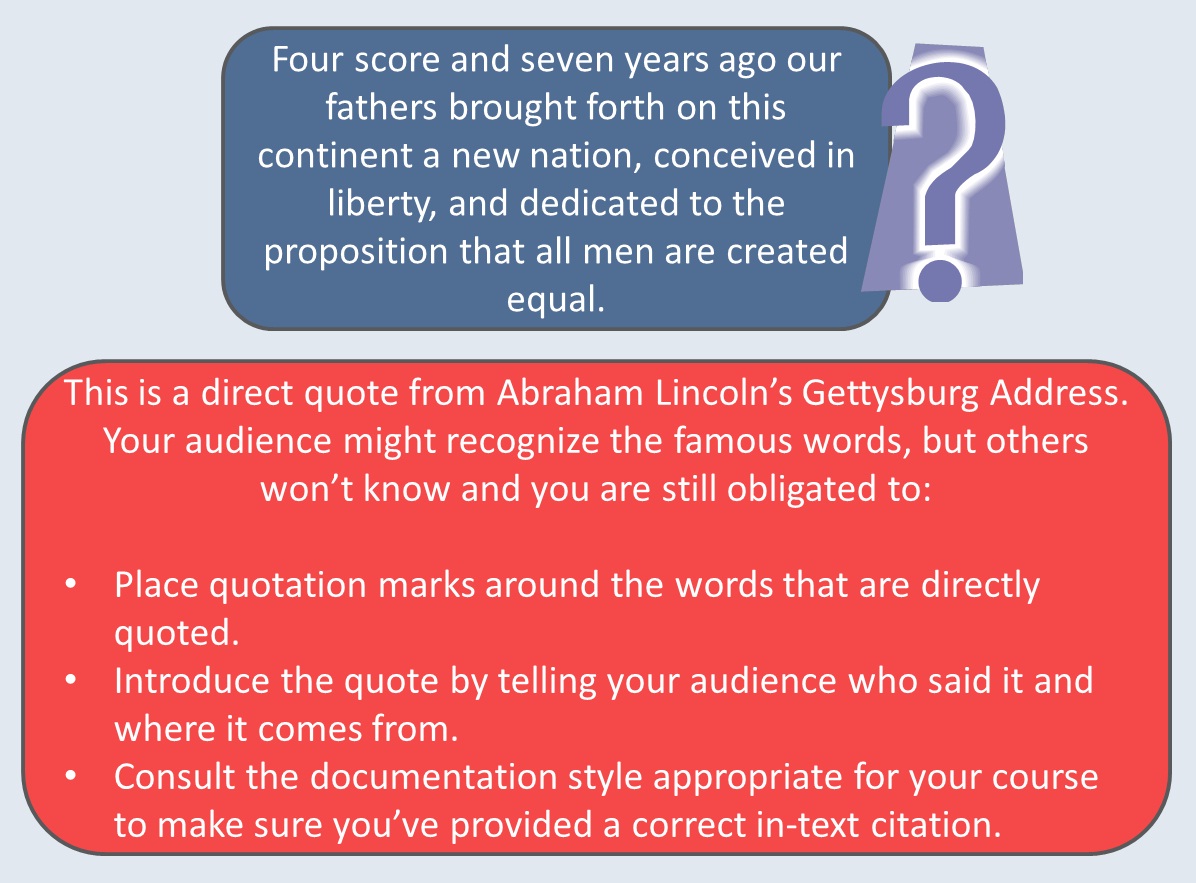
Another Person’s Ideas
Always cite another person’s ideas, even if you have summarized or paraphrased them yourself.
Ask yourself:
“Is this an idea I found in another source?”
Citing Another Person’s Ideas
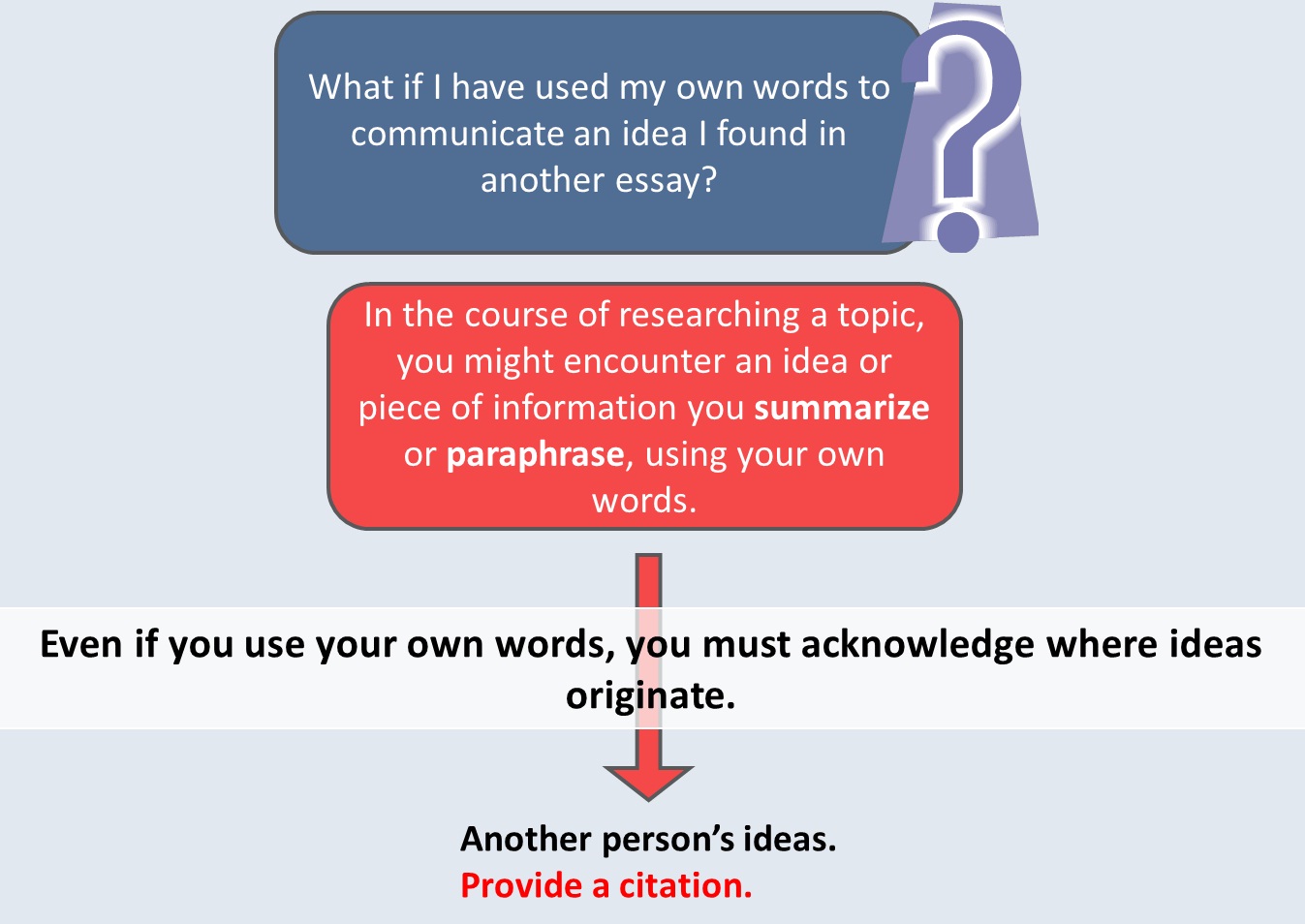
Judgments, Opinions, and Arguments
Remember that these aren’t facts or common knowledge. If they aren’t your own insights, they are someone else’s ideas. Ask yourself:
“Is this an argument from another source?”
Citing Judgments, Opinions, and Arguments
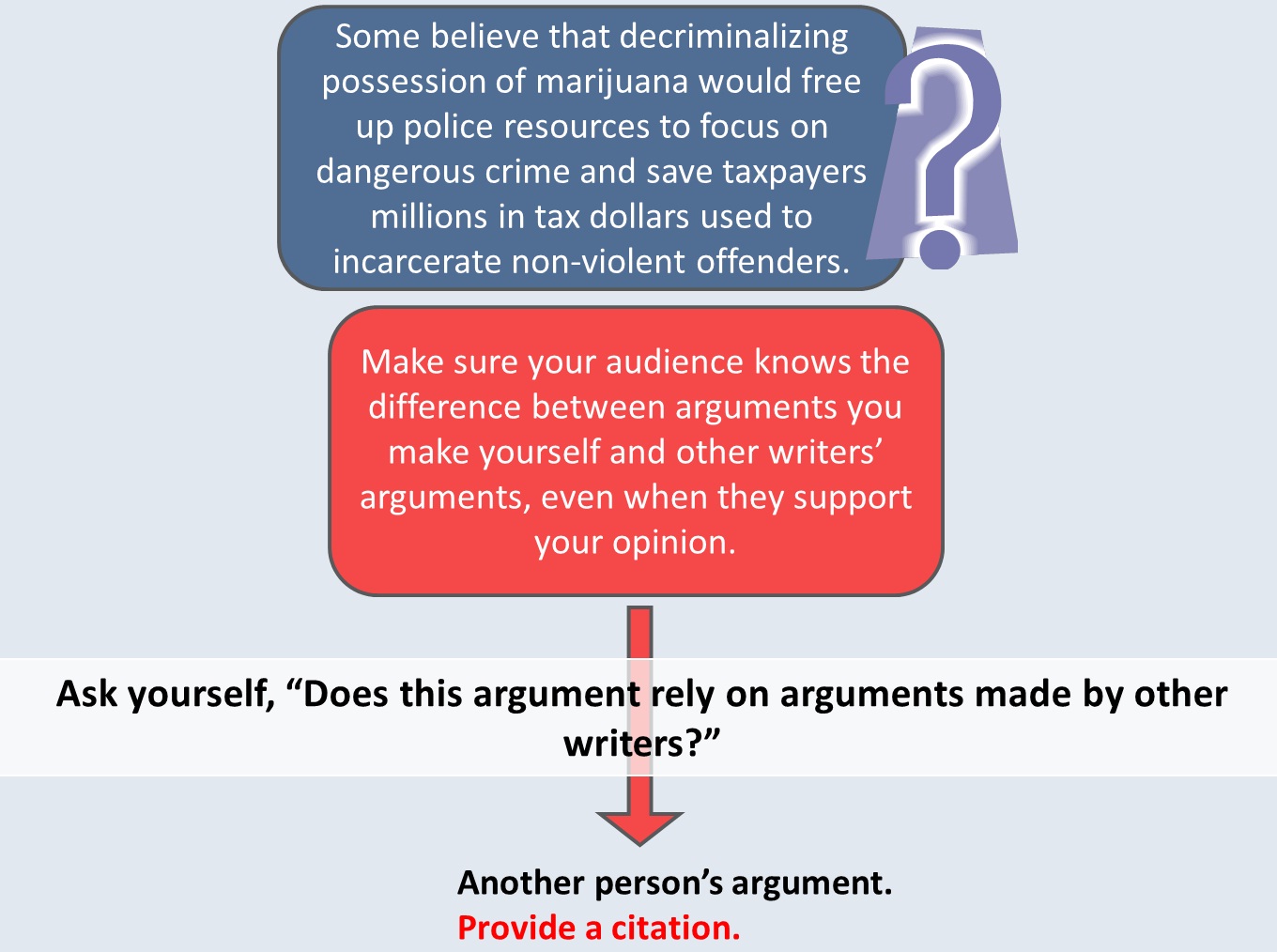
Visual Information
If you use a chart, graph, or picture from another source—
Citing Visual Information

Information that can be attributed to a company or organization rather than a single person
It is often the case that Web pages tend not to list individual authors. In this case, the organization that sponsored the publication should be listed as the author. If an author is unknown, as in an anonymous manuscript, your citation should indicate that.
Citing Information from a Company or Organization

Information from class lectures or from another aural source
If you heard the information rather than saw it, you must still cite it. There are various ways to cite information you’ve heard, including as a lecture, a personal communication, or an interview. Consult the appropriate documentation style for your course to find out how this material should be cited.
Exercise: When to Acknowledge Sources
Read each of the following statements and decide whether or not material included in the statement requires acknowledgment by the student writer.
If acknowledgment is required, click on Requires Acknowledgment.
Otherwise, click on Does Not Require Acknowledgment.
Question 1 of 10
Select the best answer for the question below.
The small-
| A. |
| B. |
Question 2 of 10
Select the best answer for the question below.
The widely accepted idea that a high percentage of Vietnam veterans committed suicide after their return home is a myth.
| A. |
| B. |
Question 3 of 10
Select the best answer for the question below.
Joseph J. Roberts served as the first president of Liberia.
| A. |
| B. |
Question 4 of 10
Select the best answer for the question below.
Fifty-
| A. |
| B. |
Question 5 of 10
Select the best answer for the question below.
Congress added the words “under God” to the Pledge of Allegiance in 1954.
| A. |
| B. |
Question 6 of 10
Select the best answer for the question below.
Although news reports stress the abductions of young children, over eighty percent of American children abducted by people outside the family are at least twelve years old.
| A. |
| B. |
Question 7 of 10
Select the best answer for the question below.
Pandas are notoriously difficult to breed in captivity.
| A. |
| B. |
Question 8 of 10
Select the best answer for the question below.
In 1918, millions of people around the world died during an influenza pandemic.
| A. |
| B. |
Question 9 of 10
Select the best answer for the question below.
By the summer of 2001, key members of President George W. Bush’s administration knew that hijacked airliners were likely to target skyscrapers.
| A. |
| B. |
Question 10 of 10
Select the best answer for the question below.
In Jameson Heights, an affluent and predominantly white neighborhood, I observed abundant fresh fruits and vegetables at reasonable prices in each of the three supermarkets; in nearby Jamesonville, an impoverished neighborhood with predominantly Latino and African American residents, I found only limited and poor-
| A. |
| B. |
Congratulations! You have completed this activity.
Total Score: out of (%)